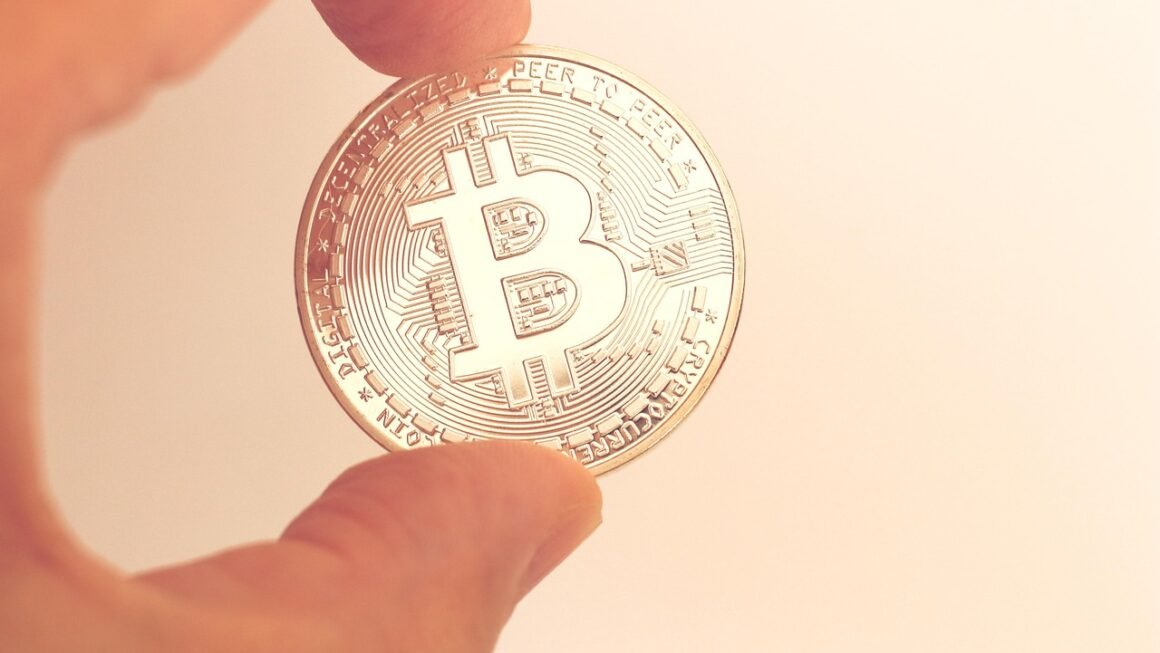Staking has emerged as a popular way for cryptocurrency holders to earn rewards on their digital assets while contributing to the security and operation of blockchain networks. This guide dives deep into the world of staking, exploring its benefits, mechanics, and risks. Whether you’re a seasoned crypto enthusiast or just starting to explore the possibilities, understanding staking is essential for navigating the ever-evolving digital asset landscape.
What is Cryptocurrency Staking?
Understanding Proof-of-Stake (PoS)
Staking is the process of holding cryptocurrency in a digital wallet to support the operations of a blockchain network. It primarily applies to blockchains that use a Proof-of-Stake (PoS) consensus mechanism. In PoS, instead of miners competing to solve complex mathematical problems (as in Proof-of-Work blockchains like Bitcoin), validators are selected to create new blocks based on the amount of cryptocurrency they “stake”. The more you stake, the higher your chances of being selected as a validator and earning rewards.
- Example: Imagine a lottery where your chances of winning increase with the number of tickets you hold. Staking is similar, where your staked coins represent your “tickets.”
How Staking Works in Practice
When you stake your coins, you’re essentially locking them up for a certain period. This act of locking up your coins helps to secure the network. In return for your contribution, you receive staking rewards, which are typically additional units of the same cryptocurrency you staked. The rewards vary depending on the blockchain, the amount staked, and the staking period.
- Analogy: Think of staking like depositing money in a savings account. You earn interest (staking rewards) for keeping your money in the account for a specific duration.
Key Differences Between Staking and Mining
While both staking and mining allow you to earn cryptocurrency, they operate on different principles:
- Staking: Uses locked cryptocurrency to participate in the network’s consensus mechanism. Requires relatively low energy consumption.
- Mining: Uses computational power to solve complex algorithms to validate transactions and create new blocks. Requires significant energy consumption.
Benefits of Staking Cryptocurrency
Earning Passive Income
One of the most attractive benefits of staking is the opportunity to earn passive income. By simply holding and staking your coins, you can generate rewards without actively trading or managing your assets. Annual Percentage Yields (APYs) can vary greatly depending on the cryptocurrency and the staking platform.
- Example: Let’s say you stake 1000 ADA (Cardano) with an APY of 5%. After one year, you’ll earn 50 ADA as staking rewards, increasing your total ADA holdings to 1050.
Contributing to Network Security
Staking plays a crucial role in securing PoS blockchains. By staking your coins, you’re actively participating in the validation process, making it more difficult for malicious actors to compromise the network. A higher number of staked coins generally leads to a more secure and robust blockchain.
- Impact: By actively staking, you contribute to the overall health and resilience of the cryptocurrency ecosystem.
Lower Barrier to Entry Compared to Mining
Staking offers a significantly lower barrier to entry compared to mining. Mining requires expensive hardware, technical expertise, and considerable electricity consumption. Staking, on the other hand, can be done with relatively small amounts of cryptocurrency and a basic understanding of the staking process.
- Accessibility: Staking is more accessible to a wider range of individuals, regardless of their technical skills or financial resources.
Supporting Decentralization
Staking promotes decentralization by allowing more users to participate in the network’s governance and validation processes. The more users who stake, the more distributed the network becomes, making it less susceptible to censorship and control by a small group of entities.
- Decentralized Control: Staking empowers individuals to contribute to the network’s security and decision-making, fostering a more democratic and resilient ecosystem.
How to Stake Your Cryptocurrency
Choosing the Right Cryptocurrency for Staking
Not all cryptocurrencies support staking. When choosing a cryptocurrency to stake, consider factors such as:
- Proof-of-Stake Implementation: Ensure the cryptocurrency uses a PoS or delegated Proof-of-Stake (DPoS) consensus mechanism.
- APY: Compare the annual percentage yield (APY) offered by different cryptocurrencies and staking platforms.
- Liquidity: Assess the liquidity of the cryptocurrency, ensuring you can easily buy or sell your staked coins if needed.
- Project Fundamentals: Research the project’s team, technology, and community to ensure its long-term viability.
- Staking Period: Consider the length of time required for staking, as some projects have lock-up periods where the coins are inaccessible.
Selecting a Staking Platform
You can stake your cryptocurrency through various platforms, including:
- Centralized Exchanges (CEXs): Binance, Coinbase, and Kraken offer staking services for a wide range of cryptocurrencies. They typically handle the technical aspects of staking, making it convenient for beginners. However, you relinquish custody of your coins.
- Decentralized Exchanges (DEXs): Some DEXs, like Uniswap and PancakeSwap, allow users to stake their tokens in liquidity pools, earning rewards from transaction fees.
- Hardware Wallets: Ledger and Trezor offer staking capabilities through their respective software interfaces, allowing you to stake your coins while maintaining full custody.
- Native Wallets: Some cryptocurrencies have their own native wallets that support staking directly. Examples include the Cardano’s Daedalus wallet and the Tezos Baking Bad wallet.
Step-by-Step Guide to Staking
The specific steps involved in staking will vary depending on the chosen cryptocurrency and staking platform. However, the general process is as follows:
- Important Tip: Always research the staking platform’s reputation and security measures before staking your coins.
Risks and Considerations of Staking
Volatility
Cryptocurrency prices are highly volatile. While you’re earning staking rewards, the value of your staked coins could decline, potentially offsetting your gains.
- Mitigation: Diversify your portfolio and stake cryptocurrencies with strong fundamentals.
Lock-Up Periods
Many staking platforms require you to lock up your coins for a specific period, during which you cannot access or trade them. This lack of liquidity can be a concern if you need to access your funds quickly.
- Careful Planning: Consider your financial needs and choose staking options with shorter lock-up periods if liquidity is a priority.
Security Risks
Staking on centralized exchanges involves entrusting your coins to a third party, which carries the risk of hacking or theft. Similarly, smart contract vulnerabilities in decentralized staking platforms can lead to loss of funds.
- Security Measures: Choose reputable staking platforms with robust security measures and consider using hardware wallets for enhanced security.
Inflation
Some cryptocurrencies use staking to incentivize participation in the network, but this can also lead to inflation. If the inflation rate is higher than the staking rewards, the value of your coins may decrease over time.
- Tokenomics Research: Understand the cryptocurrency’s tokenomics and inflation rate before staking.
Slashing
In some PoS systems, validators can be penalized (slashed) for malicious behavior or failing to validate transactions correctly. This can result in a loss of staked coins.
- Validator Reputation: If delegating your stake to a validator, research their reputation and uptime performance.
Conclusion
Staking is a valuable mechanism within the cryptocurrency ecosystem, offering opportunities for earning passive income and contributing to network security. However, it’s crucial to understand the risks involved and choose your staking options carefully. By thoroughly researching the cryptocurrency, platform, and potential risks, you can make informed decisions and maximize the benefits of staking while minimizing potential losses. As the crypto landscape continues to evolve, staying informed about the latest developments in staking will be essential for navigating this exciting and potentially rewarding aspect of digital assets.



